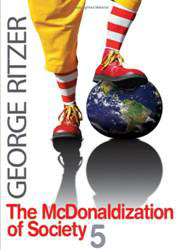IM for Teaching Unit V, Social Organization,
in Introduction to Sociology
Prepared by Caroline H. Persell August 2008

Two exercises to help students develop their awareness of social statuses and roles, are “Role Expectation and Performance” by Michael Mend (see instructor's manual for that exercise) and “Status and Role-Set” by Nancy Fischer, both from Kain and Neas (1993) Innovative Techniques for Teaching Sociological Concepts published by the ASA.
Students can be introduced to the concept of social networks by using the Social Networks Exercise. There is an instructor's manual for using the Social Networks Exercise. The 2005 article on teaching social networks by James M. Cook, ("Filling Structural Holes: Social Networks in the Introductory Course." Teaching Sociology 33:170-180) includes readings, classroom exercises, and student-centered learning projects.

Problems of cooperation and coordination in complex social systems can be taught using Susan R. Takata’s Chairs Game from Teaching Sociology (July 1997: 200-206) and the IM for using the game as well as Wendy J. Harrod’s Social Dilemma simulation from Teaching Sociology (January 1983: 266-274) and the IM for using it. Takata usefully discusses the sociological relevance of the simulation on pp. 202-203 of the article and Harrod does this on pp. 271-272.
The ability to analyze organizations is enhanced by two films based on the TV quiz show scandal in the 1950s: the 1994 film Quiz Show (133 minutes) directed by Robert Redford and the PBS American Experience (with David McCullough) documentary, The Quiz Show Scandal (60 minutes). As Mee writes in Bird (2002: 72), The film, Quiz Show… is excellent for classroom use. The plot exploring the controversy and ethics surrounding the television quiz show’s rise to prominence in American culture is compelling: the characters are multi-dimensional, and the filmmakers subtly yet powerfully demonstrate the tension between individual and organizational interpretations of events. Students consistently not only enjoy the film, but also show remarkable skills at organizational analysis when asked to write essays based on the film.”
A supplemental reading that would help students understand bureaucracy and its limitations is George Ritzer’s The McDonaldization of Society and the discussion of it by Robert Keel.
References:

Kain, Edward L. and Robin Neas. 1993. Innovative Techniques for Teaching Sociological Concepts. Washington, DC: American Sociological Association.
Keel, Robert O. URL: http://www.umsl.edu/~keelr/010/mcdonsoc.html
Last Updated: Tuesday, July 10, 2007 4:46 PM. Accessed August 31, 2008.
Mee, Alisa Potter. 2002. "Teaching the Organizational Perspective through Feature Film: Quiz Show, Fall 2001." Pp. 72-73 in Organizational Sociology: A Handbook of Syllabi and other Teaching Resources, edited by Donna C. Bird. Washington, DC: American Sociological Association.
Ritzer, George. 2000. The McDonaldization of Society. Thousand Oaks, CA: Pine Forge Press.
